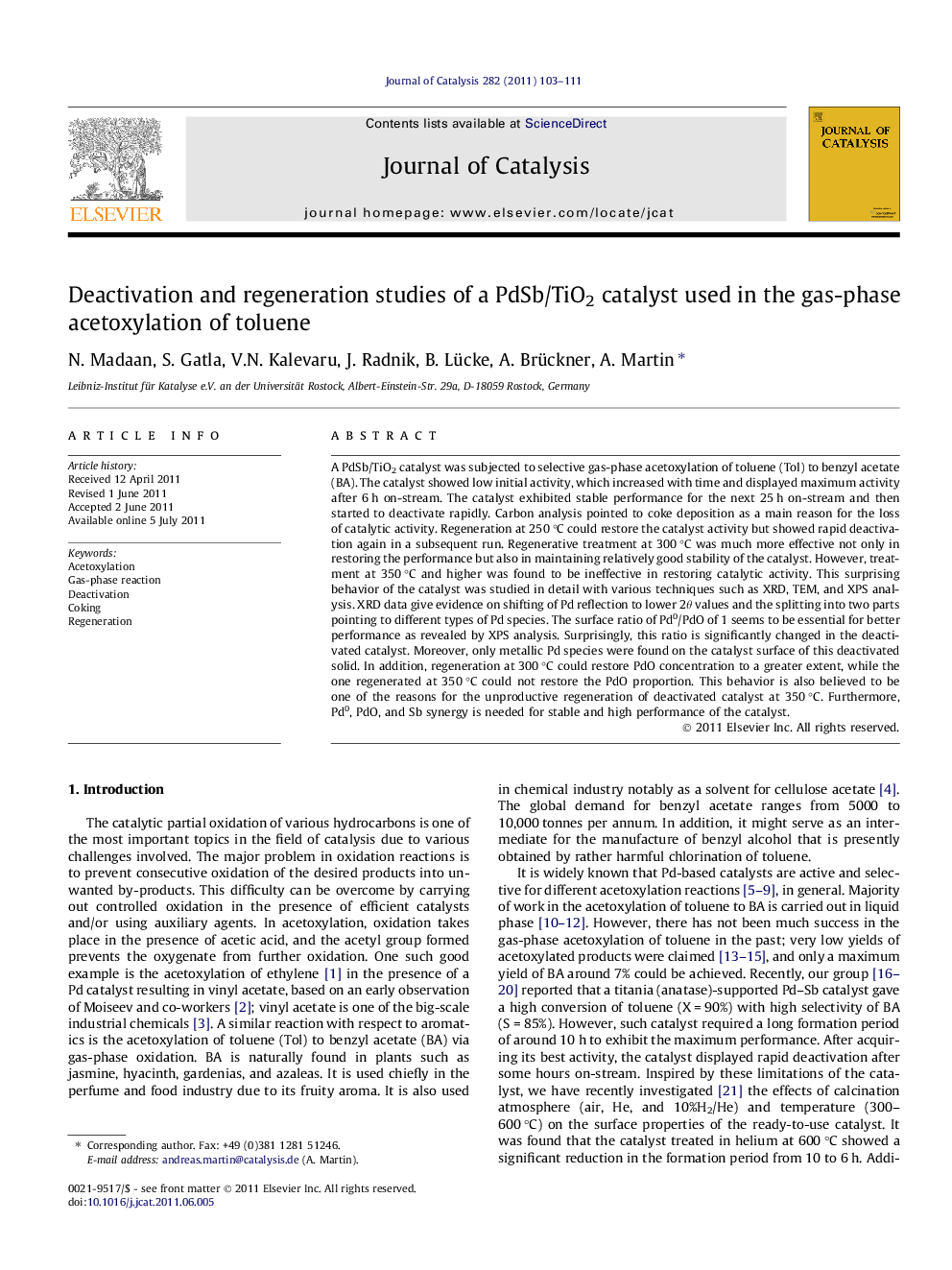| Article ID | Journal | Published Year | Pages | File Type |
|---|---|---|---|---|
| 61624 | Journal of Catalysis | 2011 | 9 Pages |
A PdSb/TiO2 catalyst was subjected to selective gas-phase acetoxylation of toluene (Tol) to benzyl acetate (BA). The catalyst showed low initial activity, which increased with time and displayed maximum activity after 6 h on-stream. The catalyst exhibited stable performance for the next 25 h on-stream and then started to deactivate rapidly. Carbon analysis pointed to coke deposition as a main reason for the loss of catalytic activity. Regeneration at 250 °C could restore the catalyst activity but showed rapid deactivation again in a subsequent run. Regenerative treatment at 300 °C was much more effective not only in restoring the performance but also in maintaining relatively good stability of the catalyst. However, treatment at 350 °C and higher was found to be ineffective in restoring catalytic activity. This surprising behavior of the catalyst was studied in detail with various techniques such as XRD, TEM, and XPS analysis. XRD data give evidence on shifting of Pd reflection to lower 2θ values and the splitting into two parts pointing to different types of Pd species. The surface ratio of Pd0/PdO of 1 seems to be essential for better performance as revealed by XPS analysis. Surprisingly, this ratio is significantly changed in the deactivated catalyst. Moreover, only metallic Pd species were found on the catalyst surface of this deactivated solid. In addition, regeneration at 300 °C could restore PdO concentration to a greater extent, while the one regenerated at 350 °C could not restore the PdO proportion. This behavior is also believed to be one of the reasons for the unproductive regeneration of deactivated catalyst at 350 °C. Furthermore, Pd0, PdO, and Sb synergy is needed for stable and high performance of the catalyst.
Graphical abstractA PdSb/titania catalyst showed significant deactivation after 33 h on-stream. The deactivation is due to coking and a loss of PdO surface species. The deactivated catalyst was regenerated at 250–400 °C for 2 h in air. The deactivation is reversible with respect to coke but irreversible at higher regeneration temperatures (>350 °C) concerning the PdO surface proportion as revealed by XPS.Figure optionsDownload full-size imageDownload high-quality image (98 K)Download as PowerPoint slideHighlights► PdSb/titania catalyst for the acetoxylation of toluene deactivates after ca. 30 h. ► Catalytic performance is due to a surface arrangement of Pd0, PdO, and Sb. ► Less PdO restored at 350 °C and higher during regeneration. ► Pd migrates to deeper layers and the optimal Pd–PdO–Sb surface ratio is disrupted.
